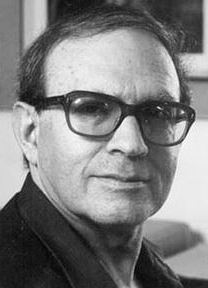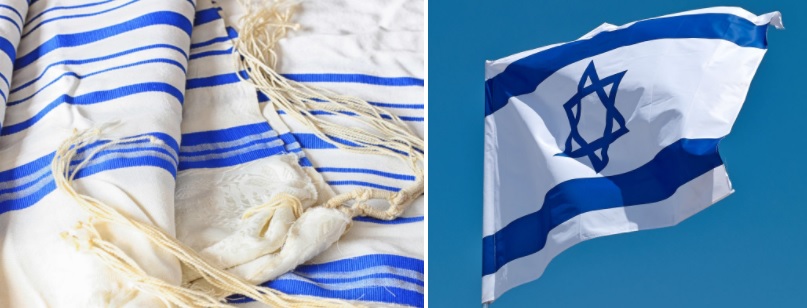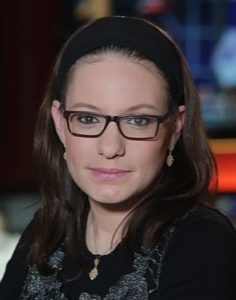Quantum Physicist and IDF Commander

Yuval Ne’eman
Yuval Ne’eman (1925-2006) was born in Tel-Aviv. His grandfather Aba Ne’eman had made aliyah to Yaffo from Lithuania as an eighteen year old, and was later among the first 66 families which settled and co-founded the city of Tel-Aviv. His grandfather also set up the city’s first electrical generator, and built some of its first factories. This may be what inspired Yuval to study mechanical engineering. He enrolled at Technion at age 15. At the same time, he joined the Haganah, and would fight valiantly in Israel’s Independence War, rising to the rank of commander of the Givati Brigade. Having spent several years living in Egypt with his parents as a child, Ne’eman spoke Arabic fluently and served as a liaison to Israel’s Mizrachi Jews, helping to settle them in the new country. In the mid-1950s, Ne’eman played a key role in the IDF’s operational command, developed its reverse mobilization system, and wrote Israel’s first defense doctrine. Meanwhile, he joined Israel’s Nuclear Energy Commission and oversaw the development of Israel’s nuclear capabilities. While serving as IDF attaché in London, he earned his PhD in physics. The following year he published his classification system for hadrons, laying the foundation for the quark model of quantum physics (proposed by recent Jews of the Week Murray Gell-Mann and George Zweig). Ne’eman returned to Israel in 1961 to direct the Soreq Nuclear Research Centre, one of the most important R&D facilities in Israel. He retired from the IDF with the rank of colonel, and founded Tel Aviv University’s School of Physics and Astronomy in 1965. Ne’eman directed it for the next seven years, then became president of he whole university. After this, he directed its Sackler Institute of Advanced Studies for nearly two decades. Ne’eman also co-directed the Center for Particle Theory at the University of Texas in Austin. A big believer in space exploration, he founded the Israel Space Agency in 1983 and chaired it until his death. He was chief scientist of Israel’s Defense Ministry in the 1970s, which opened the door for him to enter politics. Ne’eman founded the right-wing Tehiya party in response to Israel’s peace treaty with Egypt. He was elected to the Knesset in 1981 and became the country’s first Minister of Science and Technology. He continued to serve in the Knesset for over a decade. Among his many awards are the Israel Prize, the Wigner Medal, and the Albert Einstein Prize. He was also a member of the National Academy of Sciences. Ne’eman wrote a layman’s book on quantum physics called The Particle Hunters, which has been described as “the best guide to quantum physics at present available.”
Words of the Week
… Most of my people think as I do, but they’re afraid to say so… we suffer because of our Arab brothers, but we are also dependent on them. It’s a bizarre situation because the Arab countries don’t really care what happens to the Palestinian people. The only assistance that we have ever received from any country was from the ‘Zionist enemy.’
– Muhammad Zahrab, Palestinian Arab scholar

 David Wolffsohn (1856-1914) was born to a poor, religious Jewish family in the Lithuanian-Polish town of Darbenai (then part of Russia). His father was a Torah scholar and teacher, and Wolffsohn, too, was learning in yeshiva with the same goal in mind. In his teens, he was sent to live with relatives in Germany to avoid being conscripted to the Russian army. There, he met the rabbi, philosopher, and early Zionist leader Isaac Rülf, and became his devoted disciple. Meanwhile, Wolffsohn took up secular studies and went on to apprentice at a trading company. In 1877, he started his own flouring business, and was soon one of the most prominent Jewish businessmen in Europe. Henceforth, he dedicated his life to realizing that ancient dream of his people’s return to Israel. He played a key role within the Hovevei Zion movement, and in 1894 was a cofounder of the Society for the Promotion and Support of Jewish Agriculture in Syria and Palestine. When Herzl’s The Jewish State was published two years later, Wolffsohn immediately journeyed to Vienna to meet him. The two became very close and traveled the Holy Land together, setting the foundations for what would become the State of Israel. Not surprisingly, when the World Zionist Congress was founded, Herzl was made its president and Wolffsohn its vice-president. Upon Herzl’s death shortly after, Wolffsohn succeeded him. As president, he was instrumental in reinvigorating Jewish life in the Holy Land (among other things, it was under his tenure that the city of Tel-Aviv was founded). However, Wolffsohn is most famous for being the one who created the flag of modern Israel. Back in 1896, Herzl had written: “We have no flag, and we need one. If we desire to lead many men, we must raise a symbol above their heads. I would suggest a white flag, with seven golden stars…” Herzl’s proposal was good, but his flag gained little support. Wolffsohn responded to Herzl thus: “We have a flag—and it is blue and white. The talit with which we wrap ourselves when we pray: that is our symbol. Let us take this talit from its bag and unroll it before the eyes of Israel and the eyes of all nations…” Wolffsohn designed a simple flag with blue talit-like stripes and a
David Wolffsohn (1856-1914) was born to a poor, religious Jewish family in the Lithuanian-Polish town of Darbenai (then part of Russia). His father was a Torah scholar and teacher, and Wolffsohn, too, was learning in yeshiva with the same goal in mind. In his teens, he was sent to live with relatives in Germany to avoid being conscripted to the Russian army. There, he met the rabbi, philosopher, and early Zionist leader Isaac Rülf, and became his devoted disciple. Meanwhile, Wolffsohn took up secular studies and went on to apprentice at a trading company. In 1877, he started his own flouring business, and was soon one of the most prominent Jewish businessmen in Europe. Henceforth, he dedicated his life to realizing that ancient dream of his people’s return to Israel. He played a key role within the Hovevei Zion movement, and in 1894 was a cofounder of the Society for the Promotion and Support of Jewish Agriculture in Syria and Palestine. When Herzl’s The Jewish State was published two years later, Wolffsohn immediately journeyed to Vienna to meet him. The two became very close and traveled the Holy Land together, setting the foundations for what would become the State of Israel. Not surprisingly, when the World Zionist Congress was founded, Herzl was made its president and Wolffsohn its vice-president. Upon Herzl’s death shortly after, Wolffsohn succeeded him. As president, he was instrumental in reinvigorating Jewish life in the Holy Land (among other things, it was under his tenure that the city of Tel-Aviv was founded). However, Wolffsohn is most famous for being the one who created the flag of modern Israel. Back in 1896, Herzl had written: “We have no flag, and we need one. If we desire to lead many men, we must raise a symbol above their heads. I would suggest a white flag, with seven golden stars…” Herzl’s proposal was good, but his flag gained little support. Wolffsohn responded to Herzl thus: “We have a flag—and it is blue and white. The talit with which we wrap ourselves when we pray: that is our symbol. Let us take this talit from its bag and unroll it before the eyes of Israel and the eyes of all nations…” Wolffsohn designed a simple flag with blue talit-like stripes and a 
 Sivan Rahav (b. 1981) was born in Herzliya to a secular family. She knew she wanted to be a journalist from childhood, and would already interview her friends in second grade. By 8, she earned herself a “children’s press” card, and by 14 was interviewing the likes of Yitzhak Rabin and
Sivan Rahav (b. 1981) was born in Herzliya to a secular family. She knew she wanted to be a journalist from childhood, and would already interview her friends in second grade. By 8, she earned herself a “children’s press” card, and by 14 was interviewing the likes of Yitzhak Rabin and